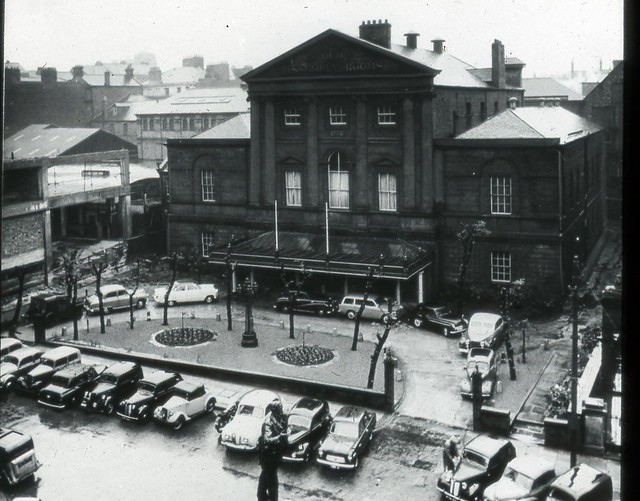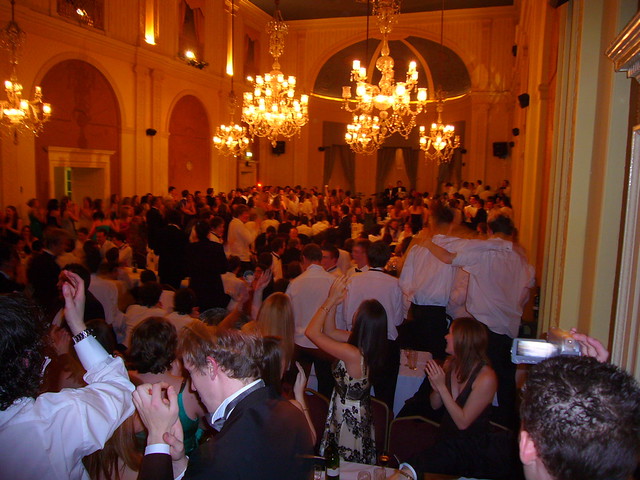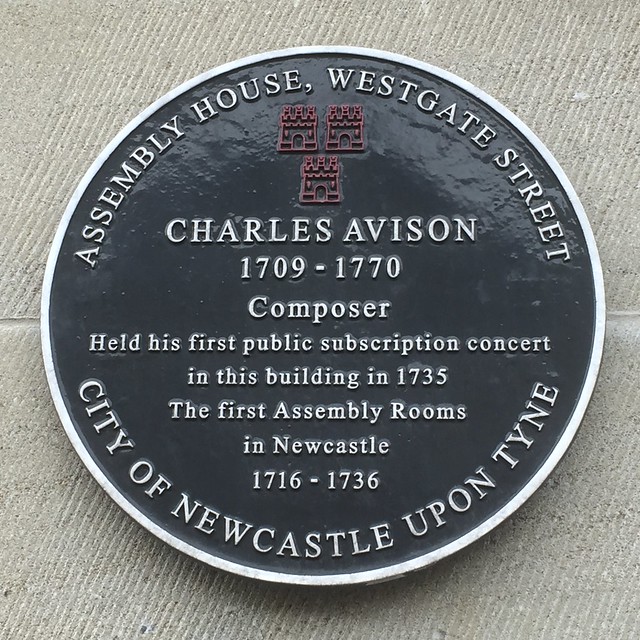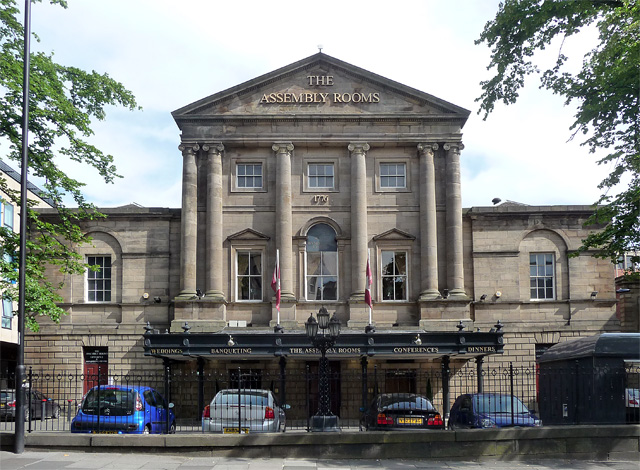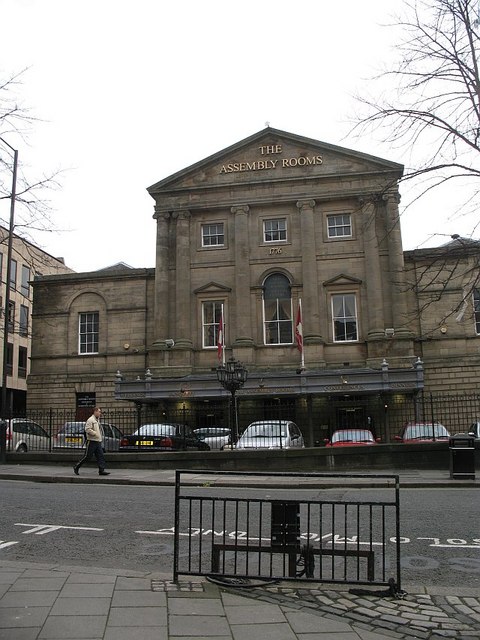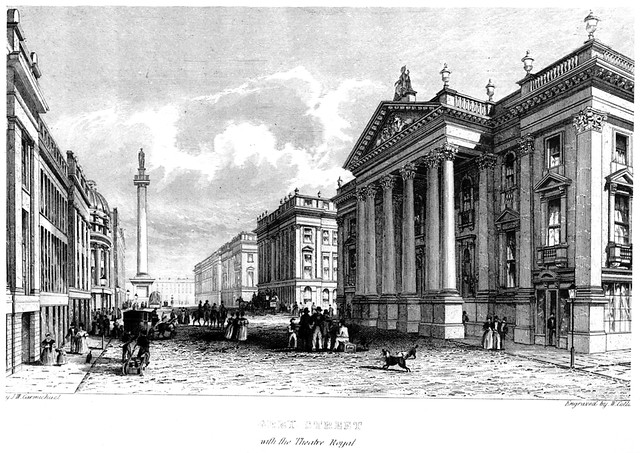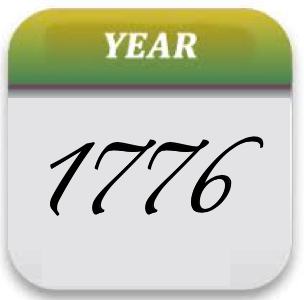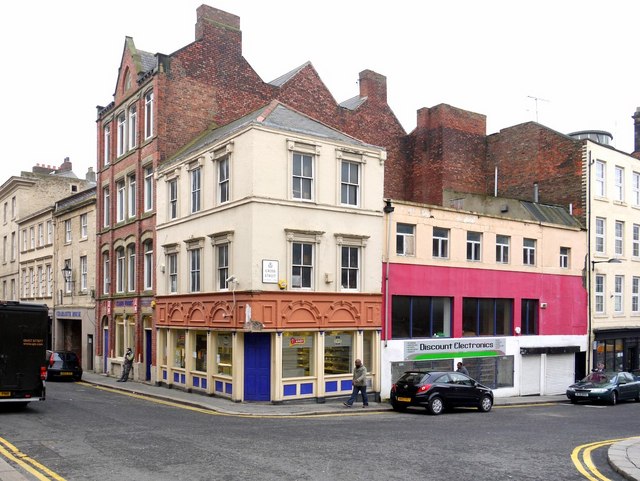Topics > Newcastle City Centre > Assembly Rooms
Assembly Rooms
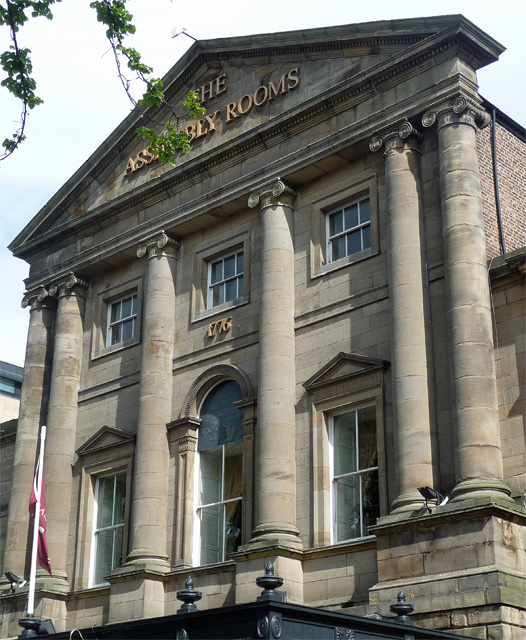 Designed by architect William Newton, this Georgian building was completed in 1776. The building was funded by members of the nobility, gentry and prominent citizens who raised £6,700 to establish a venue for 'elegant recreation' and entertaining prestigious visitors. The Assembly Rooms had a famous chandelier lighting system, which cost £630 and compromised of 10,000 pieces of Newcastle hand-cut crystal made in the Closegate Crystal works. The opening was celebrated with a ball in Newcastle's Race Week. The building was requisitioned by the army in the First World War after which it was Newcastle Old Assembly Rooms & Crown Hotel Ltd up to the end of 1967. In 1974 the building evaded the risk of demolition after it was bought by the brothers Michael and Homer Michaelides who restored the building. (Source: Assembly Rooms) The Assembly Rooms are a Grade II* listed building on the National Heritage List for England.
Designed by architect William Newton, this Georgian building was completed in 1776. The building was funded by members of the nobility, gentry and prominent citizens who raised £6,700 to establish a venue for 'elegant recreation' and entertaining prestigious visitors. The Assembly Rooms had a famous chandelier lighting system, which cost £630 and compromised of 10,000 pieces of Newcastle hand-cut crystal made in the Closegate Crystal works. The opening was celebrated with a ball in Newcastle's Race Week. The building was requisitioned by the army in the First World War after which it was Newcastle Old Assembly Rooms & Crown Hotel Ltd up to the end of 1967. In 1974 the building evaded the risk of demolition after it was bought by the brothers Michael and Homer Michaelides who restored the building. (Source: Assembly Rooms) The Assembly Rooms are a Grade II* listed building on the National Heritage List for England.
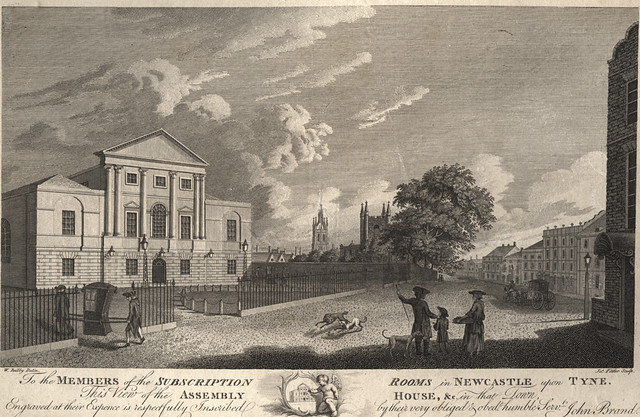
from Newcastle libraries (flickr)
006093:The Old Assembly Rooms Newcastle upon Tyne 1776
Pinned by Simon Cotterill
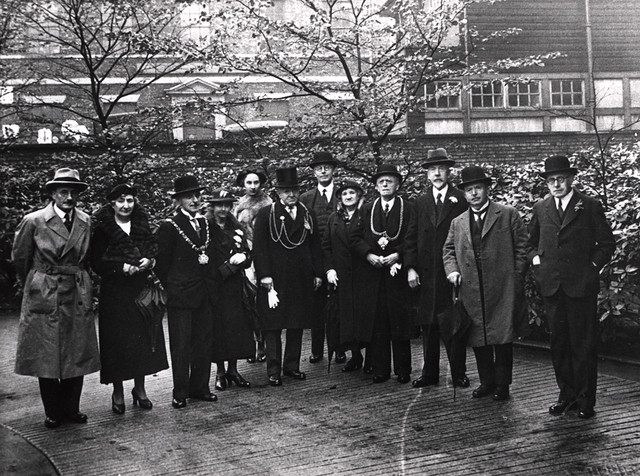
from Newcastle libraries (flickr)
037313:Official party to celebrate the opening of Newcastle Trolleybus system Old Assembly Rooms Newcastle upon Tyne Unknown 1935
Pinned by Simon Cotterill

from Newcastle libraries (flickr)
037149:Launcelot Eustace Smith Chairman of Board of Directors of Smiths Dock Co. Newcastle upon Tyne Evening World 1930/31
Pinned by Simon Cotterill
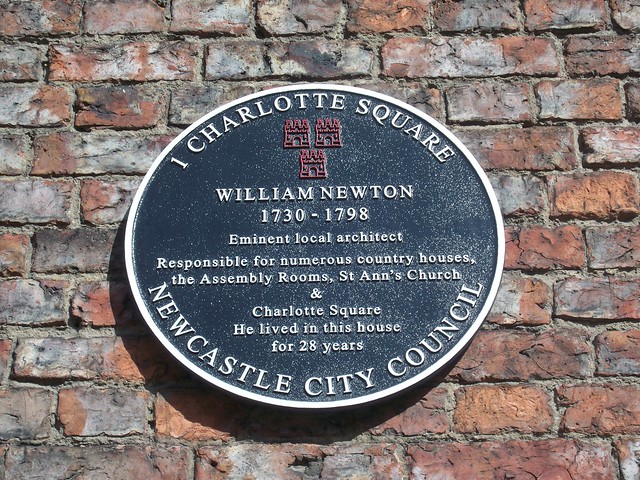
from Flickr (flickr)
William Newton Plaque - No 1 Charlotte Square, Newcastle upon Tyne. William Newton (1730 -1798), was an eminent local architect. He was reponsible for numerous country houses, the Assembly Rooms, St Ann's Church & Charlotte Square.
Pinned by Simon Cotterill

from http://www.assemblyrooms.co.u…
The Assembly Rooms
- Official Website of the Assembly Rooms, including a page on its history.
Added by
Simon Cotterill
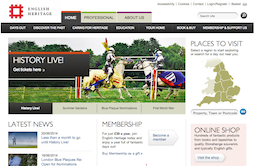
from https://historicengland.org.u…
Old Assembly Rooms
- "NZ 2464 SE NEWCASTLE UPON TYNE FENKLE STREET (north side) 20/240 14/6/54 Old Assembly Rooms G.V. II* Assembly Rooms. 1774-6 by William Newton; financed by public subscription. Sand- stone ashlar; …
Added by
Simon Cotterill

from http://www.chroniclelive.co.u…
The Assembly Rooms in Newcastle is looking good ahead of its 240th birthday
- Chronicle Live: 7th OCT 2015. "The party goes on with the revamp of the iconic city centre building as it gears up to celebrate a big milestone in 2016...."
Added by
Peter Smith

Co-Curate Page
Charles Avison (1709-1770)
- Overview About Charles Avison Charles Avison was born into a musical family in Newcastle and became one of the most important concerto composers in 18th Century England. Avison was organist at St …


from Newcastle libraries (flickr)
006093:The Old Assembly Rooms Newcastle upon Tyne 1776
Pinned by Simon Cotterill

from Newcastle libraries (flickr)
037313:Official party to celebrate the opening of Newcastle Trolleybus system Old Assembly Rooms Newcastle upon Tyne Unknown 1935
Pinned by Simon Cotterill

from Newcastle libraries (flickr)
037149:Launcelot Eustace Smith Chairman of Board of Directors of Smiths Dock Co. Newcastle upon Tyne Evening World 1930/31
Pinned by Simon Cotterill

from Flickr (flickr)
William Newton Plaque - No 1 Charlotte Square, Newcastle upon Tyne. William Newton (1730 -1798), was an eminent local architect. He was reponsible for numerous country houses, the Assembly Rooms, St Ann's Church & Charlotte Square.
Pinned by Simon Cotterill

from http://www.assemblyrooms.co.u…
The Assembly Rooms
- Official Website of the Assembly Rooms, including a page on its history.
Added by
Simon Cotterill

from https://historicengland.org.u…
Old Assembly Rooms
- "NZ 2464 SE NEWCASTLE UPON TYNE FENKLE STREET (north side) 20/240 14/6/54 Old Assembly Rooms G.V. II* Assembly Rooms. 1774-6 by William Newton; financed by public subscription. Sand- stone ashlar; …
Added by
Simon Cotterill

from http://www.chroniclelive.co.u…
The Assembly Rooms in Newcastle is looking good ahead of its 240th birthday
- Chronicle Live: 7th OCT 2015. "The party goes on with the revamp of the iconic city centre building as it gears up to celebrate a big milestone in 2016...."
Added by
Peter Smith

Co-Curate Page
Charles Avison (1709-1770)
- Overview About Charles Avison Charles Avison was born into a musical family in Newcastle and became one of the most important concerto composers in 18th Century England. Avison was organist at St …
List grade: 2*
Tyne & Wear HER: 6981
Post code: NE1 5XU
Borough: Newcastle
Grid ref: NZ2460764061
